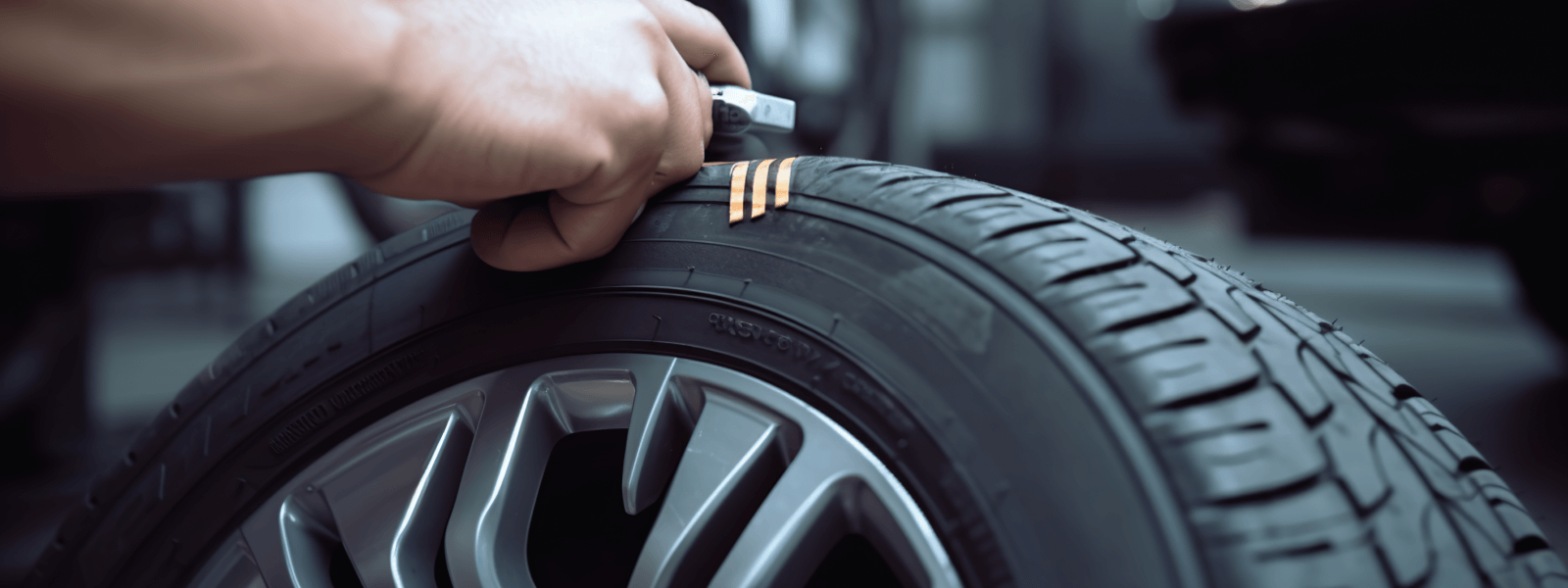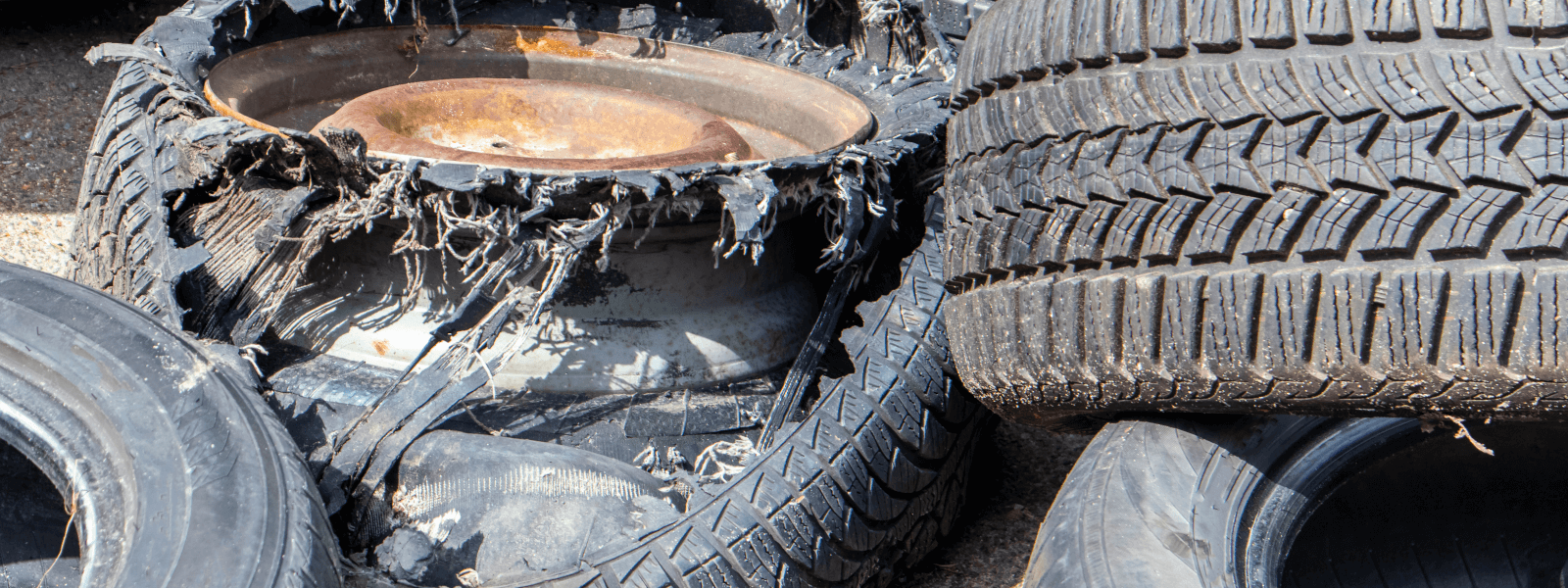Expert Tire Maintenance Tips: Extending the Life of Your Tires
Your Trusted Tire Experts in Murrieta

Tires are not just simple rubber circles on your vehicle; they serve as the vital connection between you and the road. Taking care of your tires is crucial for safety, fuel efficiency, and extending their lifespan. Ignoring tire maintenance can result in early wear, blowouts, and even accidents.
For instance, did you know that underinflated tires can decrease fuel economy by as much as 3%? This is just one way that proper tire care can save you money and enhance your safety. At 395 Auto & Performance, we recognize the significance of tire maintenance, and we're here to provide you with expert tips to help you maximize the performance of your tires.
Tire Pressure Maintenance Tips
Maintaining the correct tire pressure is arguably the most critical aspect of tire maintenance. Proper tire inflation ensures optimal contact with the road, leading to:
- Improved handling and braking.
- Reduced tire wear.
- Better fuel economy.
Checking your tire pressure is a simple process you can do at home:
- Locate the recommended tire pressure for your vehicle. This information can usually be found:
- In your vehicle's owner's manual.
- On a sticker inside the driver's side doorjamb.
- Sometimes on the fuel filler flap.
- Use a reliable tire pressure gauge to measure the pressure in each tire, including the spare.
- Ensure you check your tire pressure when the tires are cold (before driving or after the vehicle has been parked for at least three hours).
Both underinflation and overinflation can have detrimental effects on your tires:
UNDERINFLATION
Leads to excessive flexing, which generates heat and can cause tire damage or even blowouts. It also increases rolling resistance, reducing fuel economy and causing tire wear on the outside edges of the tire.
Overinflation
Reduces the contact area between the tire and the road, resulting in poor handling and braking. It can also cause tire wear in the center of the tire and makes the tire more susceptible to damage from impacts.
Expert tire maintenance tips for maintaining proper tire pressure also include adjusting for temperature changes. As temperatures drop, tire pressure decreases, and vice versa. It's crucial to check your tire pressure regularly, especially during seasonal changes. We recommend checking your tire pressure at least once a month, or more frequently if you notice any changes in your vehicle's handling.
Tire Rotation Tips for Even Wear
Tire rotation is the process of moving your tires from one position on the vehicle to another. This practice helps to distribute tire wear evenly, maximizing the life of your tires. Different vehicles require different tire rotation patterns:
- Front-wheel drive: Tires are typically moved from front to back on the same side, and the rear tires are crossed to the front.
- Rear-wheel drive: Tires are moved from back to front on the same side, and the front tires are crossed to the rear.
- All-wheel drive: A more complex pattern is often used, involving crossing tires and sometimes including the spare.
Regular tire rotation offers several benefits:
- Extends tire lifespan.
- Improves handling and traction.
- Maintains a smoother ride.
Expert tire maintenance tips recommend rotating your tires every 5,000 to 7,000 miles, or as recommended in your vehicle's owner's manual. While DIY tire rotation is possible, having it professionally done at 395 Auto & Performance ensures the job is done correctly and efficiently.
395 Auto & Performance’s Expert Assessment
At 395 Auto & Performance, our experienced technicians can provide a professional assessment of your tire damage and
help you make the right decision between tire repair and tire replacement.
Wheel Alignment and Balancing Tips for Smooth Rides
Wheel alignment and wheel balancing are two separate yet interconnected services that play a crucial role in maintaining tire health and ensuring a comfortable driving experience. Wheel alignment involves adjusting the angles of your vehicle's wheels to meet the manufacturer's specifications. When your wheels are misaligned, it can result in:
- Uneven tire wear.
- Pulling to one side.
- Vibrations in the steering wheel.
Wheel balancing ensures that the weight of each tire and wheel assembly is evenly distributed. Imbalanced wheels can cause:
- Vibrations at certain speeds.
- Premature tire wear.
- Stress on suspension components.
Expert tire maintenance tips recommend checking and adjusting your wheel alignment if you notice any signs of misalignment or after hitting a large pothole. Wheel balancing is typically done during tire rotation.
At 395 Auto & Performance, we utilize advanced equipment to guarantee accurate wheel alignment and balancing, ensuring you enjoy a smooth and comfortable ride.
Tire Inspection Tips for Early Problem Detection
Regular tire inspection is essential for catching potential issues before they escalate. Here are some expert tips for conducting a thorough visual inspection:
- Checking Tread Depth: You can use the penny test (if you can see all of Lincoln's head when you insert a penny upside down into the tread, it’s time to replace your tires) or a tread depth gauge for a more precise measurement.
- Inspecting the Sidewalls: Look for any cuts, bulges, or cracks, as these can indicate damage.
- Checking for Uneven Wear: Uneven tire wear may signal misalignment, improper inflation, or other problems.
Experts recommend getting a professional tire inspection at a local tire shop like 395 Auto & Performance if you notice any signs of damage or uneven wear. Catching these issues early can help you avoid costly repairs or dangerous situations on the road.

Tire Storage Tips for Longevity
Proper tire storage is crucial for keeping them in good condition when they're not in use. Here are some expert tips for maintaining your tires during storage:
- Cleaning: Make sure to clean your tires thoroughly with soap and water to get rid of any dirt and brake dust before you store them.
- Storage Conditions: Keep your tires in a cool, dry, and dark area, away from direct sunlight and sources of ozone, such as electric motors.
- Protection: To prevent oxidation and cracking, place each tire in its own airtight bag or wrap them in dark plastic.
- Positioning: If you're storing tires on their tread, stack them horizontally. If they don't have rims, stand them upright.
By following these expert tips for tire storage, you can help prevent dry rot and prolong the life of your tires.
> > >
Learn more about tire load and pressure markings
< < <
Tips for Choosing the Right Tires
Selecting the right tires for your vehicle and driving conditions is essential for both safety and performance. Here are some expert tips for tire maintenance and selection:
- Understanding Tire Codes: Learn to read the alphanumeric code on the tire sidewall, which provides information about its size, load capacity, speed rating, and other vital details.
- Considering Your Needs: Take into account factors like climate, driving habits, and the type of vehicle you have when making your tire choice.
- Seeking Professional Advice: The specialists at 395 Auto & Performance are available to assist you in finding the best tires tailored to your specific requirements and budget.
Choosing the right tires is a fundamental aspect of effective tire maintenance.
Tips for Extending Tire Lifespan in Extreme Weather Conditions
Extreme weather conditions, such as the heat in Murrieta and nearby desert areas, can have a major effect on tire wear. Here are some expert tire maintenance tips tailored for various weather conditions:
- Hot Weather: Elevated temperatures can raise tire pressure and speed up tire wear. It's important to check your tire pressure regularly and avoid overloading your vehicle.
- Cold Weather and Snow: Low temperatures can lower tire pressure and diminish tire traction. For better grip in snowy and icy conditions, consider using winter tires, which are made with specialized rubber compounds that stay flexible in colder weather.
- Using the right tires for the season: Switching between summer and winter tires can greatly extend the lifespan of each set, ensuring top performance in all conditions.
Adjusting your tire maintenance routine according to the weather is crucial for effective tire care.
Tire Maintenance Tips for Fuel Efficiency
Taking care of your tires can also enhance your vehicle's fuel efficiency. Here are some expert tips for maintaining your tires to boost fuel economy:
- Keep Tire Pressure in Check: Tires that are not properly inflated create more rolling resistance, which means your vehicle needs more energy (and fuel) to move.
- Opt for Low Rolling Resistance Tires: These specially designed tires minimize friction, helping to improve your fuel economy.
- Practice Efficient Driving Techniques: Gentle acceleration and braking can help reduce tire wear and enhance fuel efficiency.
By following these expert tire maintenance tips, you can save money on fuel and prolong the lifespan of your tires.
Trust 395 Auto & Performance for Your Expert Tire Maintenance Needs
Taking care of your tires is essential for your safety, improving fuel efficiency, and prolonging their lifespan. By adhering to these professional tire maintenance tips, you can keep your tires in excellent shape.
At 395 Auto & Performance, we are committed to delivering top-notch tire care and services. Whether you need tire rotation, wheel alignment, tire replacement, or inspection, we have the skills and tools to ensure you stay safe on the road. Book a tire service or consultation with us today and discover the benefits of expert tire maintenance.
Tire Maintenance FAQs
Here are some frequently asked questions about tire maintenance:
How often should I rotate my tires?
We recommend that you rotate your tires every 5,000 to 7,000 miles, or follow the guidelines in your vehicle's owner's manual.
How do I know if my tires need replacing?
To determine if your tires need to be replaced, check the tread depth. If it measures less than 2/32 of an inch (you can use the wear bars or the penny test), it's time for new tires. Also, inspect for any visible damage like cuts, bulges, or cracks.
What is the proper tire pressure for my car?
The proper tire pressure for your car can be found in your vehicle's owner's manual or on a sticker located inside the driver's side doorjamb.
What causes uneven tire wear?
Uneven tire wear can result from issues like misalignment, incorrect inflation, suspension problems, or other mechanical concerns.
How long do tires typically last?
The lifespan of tires can vary based on factors such as driving conditions, maintenance, and the quality of the tires. With proper care, tires can last for several years.
Can I mix different tire brands or tread patterns?
It's best to avoid mixing different tire brands or tread patterns on the same axle, as this can adversely affect your vehicle's handling and stability.



Your car deserves the best care, and 395 Auto & Performance is committed to delivering just that. Whether you need routine maintenance or intricate repairs, our skilled team is ready to help you get back on the road swiftly and safely.
BUSINESS HOURS
- Monday
- -
- Tuesday
- -
- Wednesday
- -
- Thursday
- -
- Friday
- -
- Saturday
- Closed
- Sunday
- Closed
All Rights Reserved | 395 Auto & Performance

